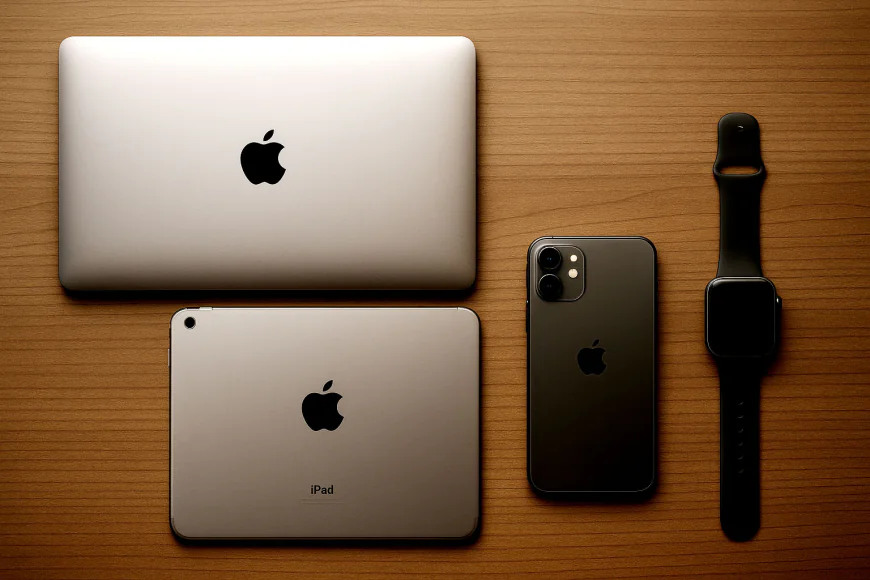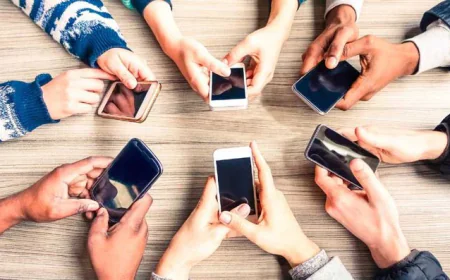Opinion / Innovation Wrapped in Control
A Double-Edged Sword of Modern Technology
Apple devices offer a seamless and elegant user experience within a tightly controlled ecosystem, trading user freedom and affordability for premium design, security, and integration.

Apple Inc. has long been synonymous with innovation, elegance, and the aspirational lifestyle that millions around the world now associate with personal technology. The gleaming iPhone, the polished MacBook, the responsive iPad, and the wearable Apple Watch are not merely tools—they are cultural artifacts, status symbols, and, for some, even extensions of personality. But beneath the sleek aluminum and glass surfaces lies a more complex reality: one that prompts both admiration and concern.
At the core of Apple’s appeal is its obsessive focus on user experience. From unboxing to daily use, Apple devices are designed to work—flawlessly, effortlessly, and intuitively. Their software and hardware are built in perfect harmony, minimizing bugs, maximizing speed, and wrapping it all in a user interface that feels almost sentient in its responsiveness. This level of polish doesn’t just happen; it is the result of ruthless prioritization, relentless testing, and a corporate philosophy that values consistency and control over open-ended exploration.
Apple devices offer a seamless digital lifestyle, but only if you play by Apple’s rules. Want to use a third-party app store? You can’t. Want to customize your home screen with interactive widgets like you can on Android? You’ll get a limited, curated version—eventually, and only on Apple’s terms. Want to repair your own device? Be prepared to face a labyrinth of proprietary screws, warnings, and voided warranties. It’s not that Apple doesn’t want you to own your devices—it just doesn’t want you to control them too much.
This philosophy has consequences. On one hand, it makes Apple products some of the most secure and stable devices in the consumer tech space. Their commitment to privacy, encrypted messaging, and regular software updates often puts them ahead of competitors in terms of user protection. Parents trust Apple’s devices for their children, professionals rely on them for their careers, and creatives use them as reliable tools for their art.
On the other hand, Apple’s tight grip stifles freedom in a way that increasingly raises ethical and antitrust concerns. The App Store, for instance, has been the center of numerous legal battles and public debates. Critics argue that Apple is less an innovator now and more a gatekeeper—prioritizing its profit margins over developer independence and consumer choice. The company’s dominance in certain markets has led to accusations of monopolistic behavior, and its hardware pricing strategy often widens the digital divide between those who can afford Apple’s luxury and those who cannot.
Moreover, the illusion of sustainability in Apple’s public messaging often masks a different story. While the company touts its environmental initiatives, the inaccessibility of parts and the design of products to be less repairable contradicts the principles of long-term use and right-to-repair movements. Consumers are subtly encouraged to upgrade every few years, feeding into the cycle of e-waste and planned obsolescence.
Despite all this, Apple’s popularity remains largely unshaken. Why? Because the experience it offers is real, and for many, it is enough. The integration between devices—the way a phone call can be answered on a MacBook, or how a file copied on an iPhone can be pasted on an iPad—is enchanting. The emotional connection Apple fosters through marketing, branding, and design is unparalleled. People don’t just use Apple devices—they trust them, defend them, and in many cases, define themselves through them.
In the end, Apple’s story is not just about gadgets—it is about the future of personal technology. It asks us to choose between control and convenience, freedom and fluidity, individuality and uniformity. Apple has proven that it can craft some of the finest devices on the planet. The question now is: can we, as consumers, remain aware of what we trade away in return for that elegance?
Apple gives us perfection, but it often demands surrender. Whether that exchange is worth it—remains a question for each of us to answer.
















































